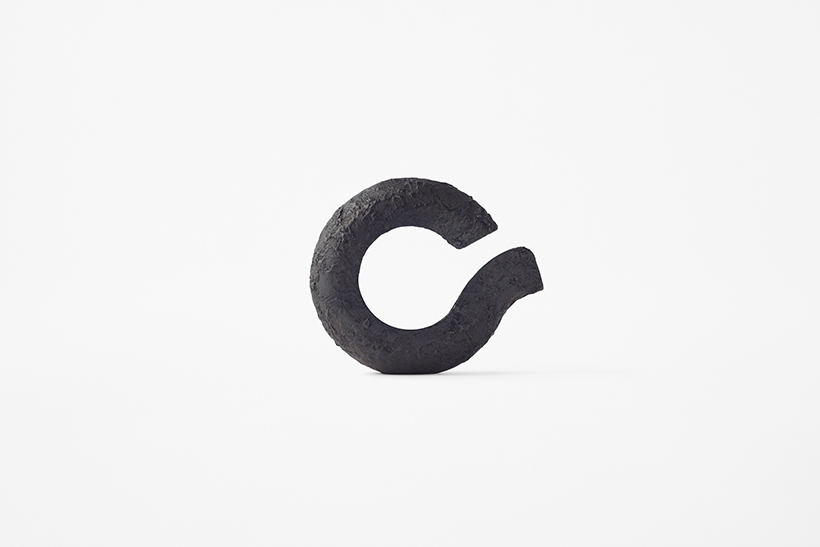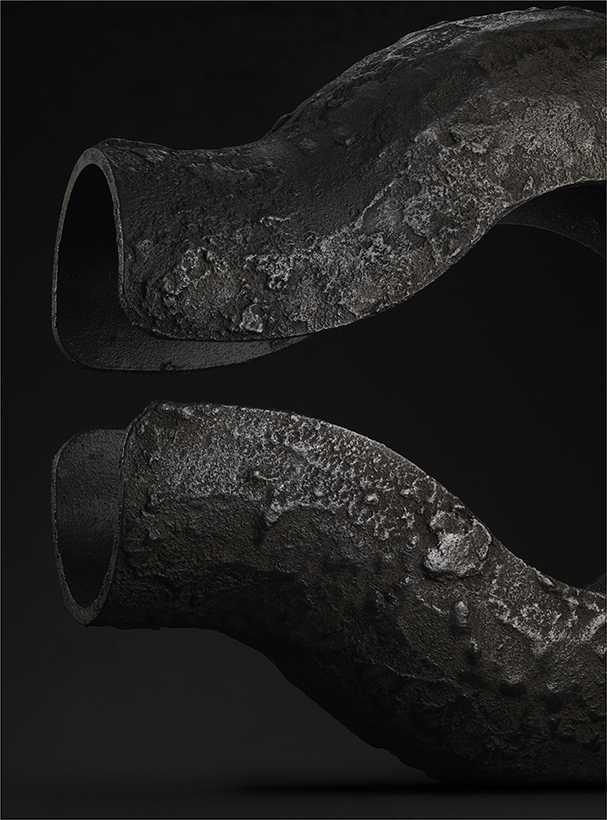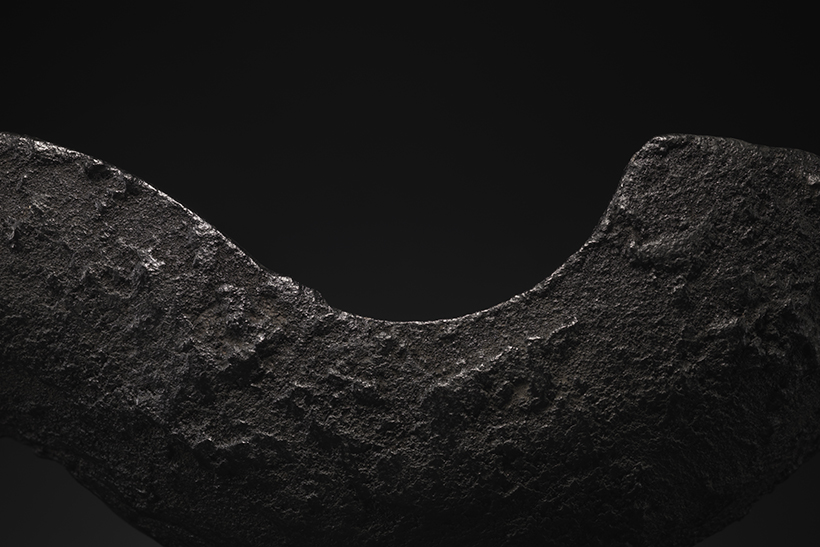teppun
Onishi Seiwemon is a master artisan household name of Chagama (iron kettle for tea ceremony) craftmanship that has continued since the Muromachi period in Kyoto. In the process of making a Chagama, there are various processing techniques after casting. One example is the haochi process, in which the sides of the tea kettle are chipped off with a hammer to add character, and yakinuki, in which the surface is burned over a charcoal fire to give it an oxide film. The most notable technique is taishin netsukan tetsu urushi – mixing iron powder with lacquer, followed by heating and drying, and subsequent beating on the surface. Contrary to its traditional use for maintenance and repairing scratches and leaks, this technique was employed to create a new collection of vessels.
The first step was to use a 3D printer, in which a laser sinters titanium powder, to create a series of titanium vessels. A Chagama is shaped like a rotated U-shaped cross-section, so a form with the same U-shaped cross-section was prepared. By slightly pinching the end, it can be used as a spout, a Tokkuri (sake vessel) or a soy sauce pitcher, or as a vase to hold flowers or branches. Finally, the vessel was finished with tetsu urushi mentioned above, by the 16th Generation Onishi Seiwemon.
The inside of the vessel is finely textured with less iron powder, and on the outside, the amount of iron powder is increased to create a more textured and rougher surface, giving it a different look on the inside and outside. The result is a juxtaposed combination of modern 3D printing and traditional craftsmanship, and deriving from the fact that both methods use metal powder, it was named Teppun (Tetsu=metal, pun=powder).

































